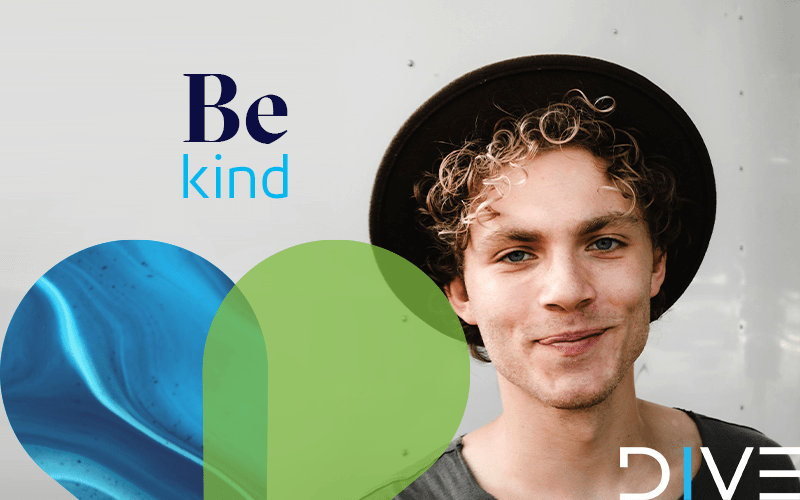„Someone feeling wronged is like someone feeling thirsty. Don’t tell them they aren’t. Sit with them and have a drink.“~ Daniel Handler
Better known to many of us as author Lemony Snicket, Daniel Handler wrote these words as part of a collection of writings about Occupy Wall Street. Occupy was a protest movement about economic inequality, but Handler’s advice is for anyone engaged in discussion on any topic where you desire to learn more as an ally, and today I’m writing about having courageous conversations about race.
Earlier this year, Blue Yonder launched empathy the company’s fourth core value. Empathy involves listening and understanding another’s point of view on an emotional level…but how can we be expected to listen for an answer when we aren’t certain of the question? How many of my colleagues have the desire to better understand what years of inequality and suffering have done to the Black community, or to even become someone who identifies as an ally, but don’t know how to begin? Perhaps you don’t feel you know anyone well-versed enough on these topics. Maybe you aren’t sure which are considered authoritative resources if you want to research the topic yourself. Or it could be that you struggle with what questions to ask. Racism is such a sensitive, emotion-laden topic that we’ve all become tentative about mentioning it at all. But choosing courageously to have this conversation is what empathy requires of us. We must “sit together and have a drink” as Handler counsels, if we are ever to evolve as a company and as human beings.
When I think about my own journey to becoming a better ally, these five points have been keys to having more courageous conversations with colleagues, friends, and family.
- Be certain of your intention. Entering into a conversation about race is for those who want to be part of changing our world for the better for everyone, or those who, as a starting point, have the desire to better understand issues of race. This is not a discussion for those who only wish to alleviate their guilt or to appear “woke.”
- Allow for complexity. No one’s personal experience with racism can possibly provide a complete survey of the topic. Racism is and has been a multi-generational burden on communities as well as individuals. As such, recognizing and acknowledging experiences with racism are valid and real. Don’t be surprised to find yourselves in discussions involving genuine feelings instead of simply citing facts and data to each other. I like a solid, data-driven discussion as much as anyone but remember – share a drink, first! When we acknowledge racism “really happened” to someone, we create space and oxygen for courageous conversation to occur.
- Seek to understand. Learning occurs from a place of discomfort. None of us are experts; none of us can possibly have all the answers. To make the most of a conversation about race, we must become comfortable with our own discomfort. Discomfort typically results in defensiveness and guarded behavior, when what a discussion of race challenges us to do is to remain open to changing our minds. There is a fine line between asking for clarification and asking to push back. Be certain of the motives for your questions if you genuinely seek to understand.
- Do the work. A moment of clarity came for me when I heard an interview with Dr. Cornel West, who distinguishes racism by intent from racism by consequence. Many who hear the word “racism” will immediately think of intentional examples such as ugly scenes of racial violence during the civil rights movement. But racism is also a consequence of bad – often unintentionally bad – policies and decisions which cause deep, lasting harm to POC communities. Ever heard of redlining? If you’ve got six minutes, here’s a perfect example of racism by consequence. Researching the history of consequential racism is critical if we are ever to dismantle the frameworks holding back everyone in our society, and I do mean everyone. We are all impacted and diminished by systemic racism, whether we feel it or not.
- Internalize others’ experiences. During our recent all-company training, Inclusion During Difficult Times, Pat Wadors said, “Empathy is being an observer; it is not taking action.” One action of allyship is to apply what we learn from others’ experiences to our own perspectives and mindsets. Becoming an ally starts with committing ourselves to the effort of change and changing from within. The work every Blue Yonder associate has been asked to do on our own implicit bias and by creating an inclusive workplace is also a good step to take, but our efforts must expand outside of the office to the world at large where our allyship is so sorely needed.
I am by no means an expert. But if you’ve read this far, I hope you can make use of what’s worked for me in the courageous conversations you’re having with others. Conversations in your work and lives away from work – be it about race, public health, gender identity, or any issue critical to everyone’s happiness and security. I believe every brave attempt you make to hold these conversations absolutely matters and is making a positive change to our world. I celebrate you for your courage and for joining everyone who is ready to change for the better. Go forth and share that drink.

